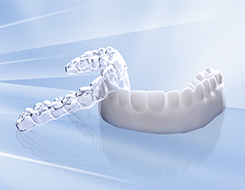Invisible orthodontics market scale and trend in following 10 years
In the coming 10 years, it's expected that the invisible orthodontics market will continue to grow at a significant rate, with a compounded annual growth rate (CAGR) ranging from 15% to 25%. Assuming a CAGR of 20%, the market size could reach around $12-15 billion by 2030. The number of cases is likewise expected to increase over this period as the demand for invisible orthodontic treatments continues to surge.
Regional share for the invisible orthodontics market is as follows (based on 2020 data):
1. North America: 40-45% market share
2. Europe: 25-30% market share
3. Asia-Pacific: 10-15% market share
4. Latin America: 5-10% market share
5. Middle East & Africa: 5% or less market share
Global demand for invisible orthodontic treatment plans differs across regions due to genetic, cultural, and socioeconomic factors:
1. North America and Europe: There is high demand for aesthetic treatments, including invisible orthodontic aligners due to higher awareness of dental health and aesthetic standards. Common malocclusions include crowding and overjet.
2. Asia: The demand for invisible orthodontics is increasing due to rising disposable income and awareness of dental health. Common malocclusions in the region include open bite, spacing, and Angle's Class III malocclusion.
3. Latin America and Africa: Although the demand for invisible orthodontics is growing, access to specialized treatment may be limited due to economic restrictions and less widespread knowledge of available treatment options. Common malocclusions include crowding, overjet, and Angle's Class II malocclusion.
The distribution of common malocclusions and symptoms varies across different populations:
1. Crowding: More prevalent in populations with smaller jaw sizes and larger tooth size, such as Europeans and Africans.
2. Spacing: More common in populations with smaller teeth or those with missing teeth, often observed in Asian and certain indigenous populations.
3. Overjet: A higher prevalence in Caucasian populations and less common in African or Asian populations.
4. Open bite: More commonly observed in Asian populations, usually associated with genetics or specific oral habits, such as tongue-thrusting or prolonged thumb-sucking.
5. Angle's Class II malocclusion: Higher prevalence in Caucasian populations.
6. Angle's Class III malocclusion: More prevalent in Asian populations and less common in Caucasian or African populations.
It is essential to recognize these regional differences and preferences when designing invisible orthodontic treatment plans for patients from various backgrounds. Tailoring treatment plans to meet the unique needs of patients from diverse global regions ensures greater success and satisfaction.
-
1
How do we make good quality of Clear Aligner during the manufacture and designing the treatment plan
Jun 15,2023
-
2
Digital technology trend in clear invisible orthodontics
Jun 14,2023
-
3
What our orthodontics team do for a best treatment plan
Jun 12,2023
-
4
Different age groups in clear aligner treatment plan
Jun 21,2023
-
5
The advantage of Invisible orthodontics and clear aligner
Jun 12,2023
-
6
Invisible orthodontics market scale and trend in following 10 years
Jun 15,2023
Customization Service
RFG REQUEST
FOR QUOTATION
Global Sourcing Marketplace
-
282100+
RFQ
-
<23h
Avg Quotation Duration
-
175000+
Active Suppliers
-
6039
Industries
One Request, Multiple Quotes
"Outd doorP65 waterproofhigh lumen led reflector 30w 50w 100w linear led flood light" from D***** received 6 quotation(s)

















